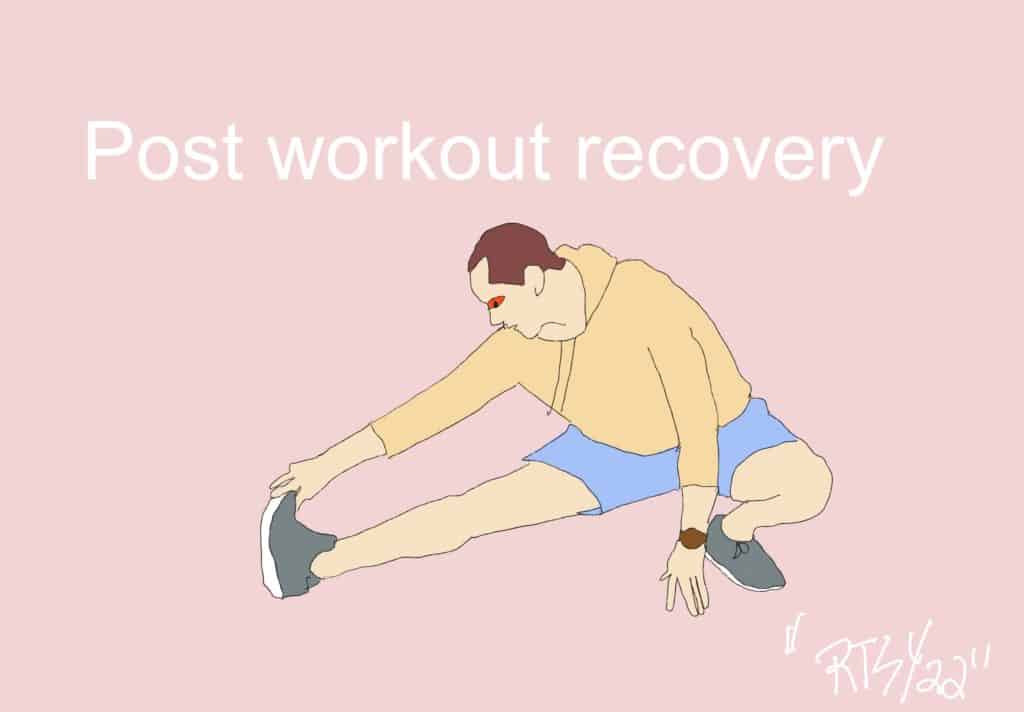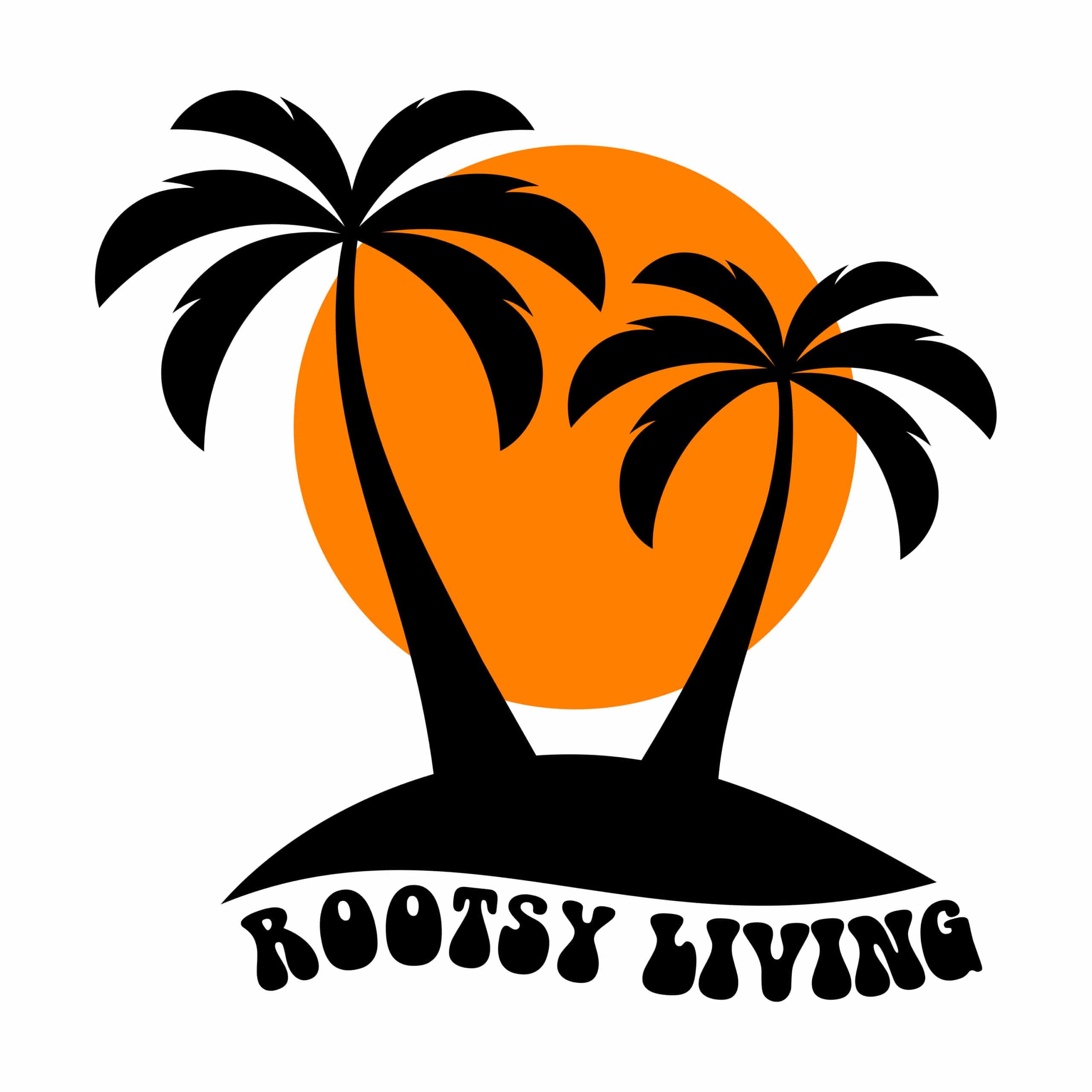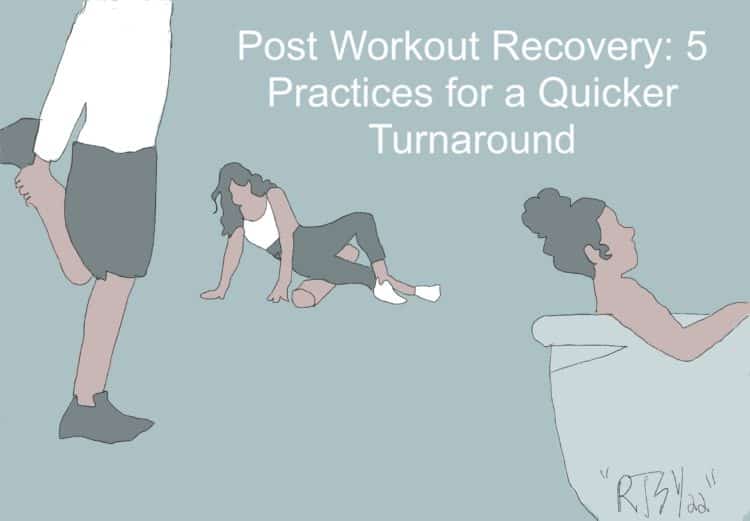No matter your age, sex, body type, or lifestyle, working out should be a daily practice. Not only is regular physical activity associated with greater physical fitness; it’s also the best way to keep your mind healthy and strong.
But “working out” is more than just having an exercise routine. To be sure, the individual exercises and drills you perform are important. But what you do after your workout is just as crucial.
Having a post workout recovery plan will ensure that your body fully recovers from the strain you’ve put on it during your workout — something that is critical for all healthy people, and especially for serious athletes and older adults. Just ask Lebron James. He spent over a million dollars on his body in one season alone.
No matter who you are or what types of workouts you perform, a quality post workout recovery plan will allow you to keep up a vigorous workout plan well into your twilight years.
So, what type of post workout recovery plan is best?
Below, I’ve outlined five techniques to consider. While you may not be able to incorporate every one of these techniques, you should certainly try a few to see what works best for you.
Table of Contents
1. Ice Baths
If you’ve been following Joe Rogan, you already know about the ice bath craze. Rogan has been touting the practice of regular ice bath plunges for several years. And according to experts, the rumored benefits may indeed be true.
Regular ice bathing has been associated with better sleep, increased mental resilience, decreased inflammation, and improved focus. Of course, one of the main benefits is expedited muscle recovery after workouts.
Not only do ice baths soothe sore muscles, helping them feel less painful, but they also reduce internal inflammation, allowing you to recover faster and amplifying your progress. Just remember to wait to take your ice bath until at least two hours after your workout so that it does not interfere with the muscle building process.
How long should you stay in an ice bath?
As soon as someone seriously considers taking ice baths at home, one immediate question usually pops up: How long should you stay in an ice bath?
You have two basic options here:
- Below 35° Fahrenheit for three minutes or less (usually performed in conjunction with saunas)
- 35° Fahrenheit or above for three minutes or longer (best for beginners)
Choose what works best for you in regards to temperature, but be sure to remember one thing: Consistency is key. Ice bathing at a “higher” temperature (closer to 50° Fahrenheit) every day will always trump infrequent ice baths at lower temperatures (closer to 40° Fahrenheit).
With that said, when you’re just starting out, I recommend beginning at around 47° Fahrenheit and staying in for around five minutes. Then, push it up to 10 minutes, etc.
2. Sauna Therapy
Joe Rogan also recommends regular saunas for post workout recovery. Indeed, a range of outstanding benefits have been associated with sauna use, including increased blood circulation, improved sleep and relaxation, better management of stress, improved cardiovascular function, pain reduction, and increased longevity.
Does living a longer, healthier, happier life sound good to you? You may want to give saunas a try. Worn-out cells are able to recover faster because of higher oxygen volume in your blood and increased circulation. Moreover, your body will produce more endorphins, which will help you feel stronger and more rested in a shorter period of time.
Of course, sauna use is ultra popular for gym goers. And again, frequency of use is key. Studies have shown that benefits like disease reduction and the extension of lifespan only occur with regular sauna use.
With this in mind, if you plan on using this method to aid in your post workout recovery, it’s best to join a gym that has a sauna available. To have one installed in your home can cost between $3,000 and $6,000.
3. Protein Shakes
One of the main goals of any workout is to create new muscle. But in order to grow and repair muscle, you’ve got to have protein. Because of this, protein shakes are often a go-to for athletes. While some recommend protein shakes prior to working out and others swear by its effectiveness after workouts, it’s really up to you.
The main benefit of consuming protein shakes when exercising is that it provides your body with a large amount of protein, which is necessary for muscle growth.
Probably the best thing about protein shakes is that they are easy (and fast). You can simply mix some milk or water with your favorite protein powder, and that will easily provide you with 20, 30, or even 40 grams of protein in one meal.
Of course, it’s also worth noting that you should be getting even more protein than that in your daily diet by consuming foods like meat, fish, eggs, and dairy products. These foods have the most protein and should be included in every meal and snack for optimal muscle growth.
4. Foam Roller Work
Foam rollers are exercise tools that are most commonly used for self myofascial release (a self massage technique). While foam rollers can be used in many ways, they are primarily used to reduce inflammation, soreness, and tightness in the muscles after a vigorous workout. In addition, many people with physical injuries find foam rollers to be useful. They are available in a variety of shapes, sizes, and densities.
If you want to try using a foam roller after your workouts, check out YouTube to find helpful beginner videos. These handy tools can ease overall muscle pain, relieve back pain, and improve muscle growth. Foam roller exercises are also helpful at improving your range of motion and helping you feel more relaxed in general after exercise.

5. Yoga and Stretching
Lastly, stretching is always a wise idea after you’ve completed a serious workout. Your muscles will be loose and warm at this point, making it the perfect time to extend their length slowly and safely. Over time with this practice, you’ll notice permanent elongation of your muscles, making you more flexible than ever.
Yoga is also recommended. As a practice, yoga is really so much more than just “stretching”. However, it is often associated with stretching because it involves static poses that may extend your muscles beyond their typical abilities.
In addition to simple stretches, however, yoga after a workout can also help to restore muscle circulation and increase overall blood flow throughout your body. This, in turn, can quicken the pace of your post workout recovery and allow you to partake in more intense training in the future.
Post Workout Recovery: How Can I Recover Faster?
There is no “secret” to recovering super-fast after a workout. Still, the above is a list of post workout recovery tips that can help.
In addition, make sure you’re getting enough sleep and eating a healthy diet. Get regular massages when possible. And, of course, drink plenty of water. Your body needs water to function optimally, and intense workouts make you sweat a lot, which depletes your body’s hydration.
In the end, if you are paying attention to your post workout recovery plan and experimenting with different techniques, you’re bound to find something that works for you. Hopefully, this post has given you some quality ideas to get started.

